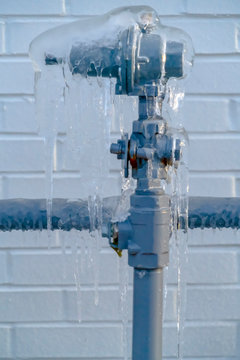The content further down involving Winter Plumbing Precautions: Preventing Frozen Pipes is extremely captivating. Have a go and draw your own assumptions.
:strip_icc()/snow-outdoor-faucet-pipes-4af65d1e5e904fb1aa7bf74071fe5d89.jpg)
Winter can damage your plumbing, especially by freezing pipes. Below's exactly how to prevent it from taking place and what to do if it does.
Intro
As temperature levels decline, the threat of icy pipes increases, possibly resulting in costly repair services and water damage. Recognizing how to avoid icy pipelines is critical for homeowners in cold environments.
Understanding Frozen Pipelines
What causes pipes to freeze?
Pipes ice up when exposed to temperatures below 32 ° F (0 ° C) for expanded durations. As water inside the pipelines ices up, it increases, taxing the pipeline walls and potentially causing them to break.
Risks and damages
Frozen pipelines can bring about water interruptions, residential property damages, and costly fixings. Ruptured pipelines can flood homes and cause substantial structural damages.
Indications of Frozen Pipes
Determining icy pipelines early can prevent them from rupturing.
Just how to identify icy pipelines
Seek reduced water flow from faucets, uncommon odors or noises from pipes, and visible frost on revealed pipes.
Prevention Tips
Protecting susceptible pipes
Cover pipelines in insulation sleeves or use warmth tape to protect them from freezing temperature levels. Concentrate on pipes in unheated or exterior areas of the home.
Heating strategies
Maintain indoor rooms appropriately heated, especially locations with pipes. Open up closet doors to permit warm air to distribute around pipes under sinks.
Safeguarding Outdoor Pipes
Garden hoses and outside taps
Separate and drain pipes yard tubes prior to wintertime. Install frost-proof faucets or cover outside taps with insulated caps.
What to Do If Your Pipes Freeze
Immediate activities to take
If you suspect frozen pipes, maintain faucets available to ease pressure as the ice melts. Utilize a hairdryer or towels soaked in warm water to thaw pipes gradually.
Long-Term Solutions
Architectural modifications
Think about rerouting pipelines away from exterior walls or unheated areas. Add extra insulation to attics, cellars, and crawl spaces.
Updating insulation
Buy high-quality insulation for pipelines, attic rooms, and walls. Appropriate insulation assists maintain consistent temperature levels and decreases the risk of icy pipes.
Conclusion
Preventing icy pipes needs proactive actions and fast reactions. By recognizing the causes, indicators, and preventive measures, property owners can protect their pipes throughout cold weather.
5 Ways to Prevent Frozen Pipes
Drain Outdoor Faucets and Disconnect Hoses
First, close the shut-off valve that controls the flow of water in the pipe to your outdoor faucet. Then, head outside to disconnect and drain your hose and open the outdoor faucet to allow the water to completely drain out of the line. Turn off the faucet when done. Finally, head back to the shut-off valve and drain the remaining water inside the pipe into a bucket or container. Additionally, if you have a home irrigation system, you should consider hiring an expert to clear the system of water each year.
Insulate Pipes
One of the best and most cost-effective methods for preventing frozen water pipes is to wrap your pipes with insulation. This is especially important for areas in your home that aren’t exposed to heat, such as an attic. We suggest using foam sleeves, which can typically be found at your local hardware store.
Keep Heat Running at 65
Your pipes are located inside your walls, and the temperature there is much colder than the rest of the house. To prevent your pipes from freezing, The Insurance Information Institute suggests that you keep your home heated to at least 65 degrees, even when traveling. You may want to invest in smart devices that can keep an eye on the temperature in your home while you’re away.
Leave Water Dripping
Moving water — even a small trickle — can prevent ice from forming inside your pipes. When freezing temps are imminent, start a drip of water from all faucets that serve exposed pipes. Leaving a few faucets running will also help relieve pressure inside the pipes and help prevent a rupture if the water inside freezes.
Open Cupboard Doors
Warm your kitchen and bathroom pipes by opening cupboards and vanities. You should also leave your interior doors ajar to help warm air circulate evenly throughout your home.

We had been introduced to that article about How To Avoid Freezing Pipes from a buddy on our other site. Be sure to set aside a second to promote this blog entry if you appreciated it. We enjoy your readership.
Explore Now